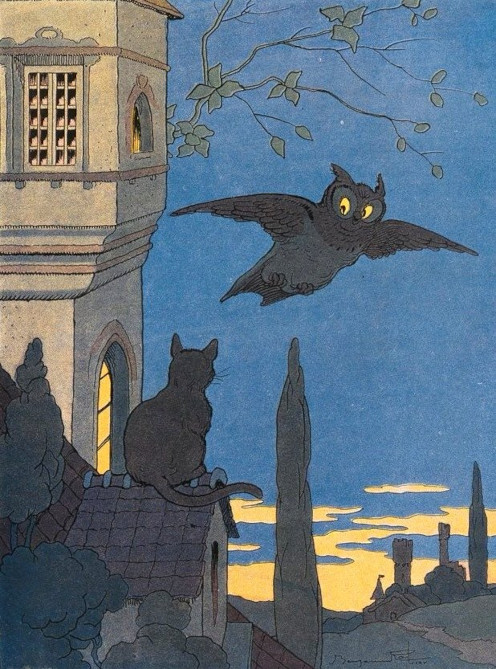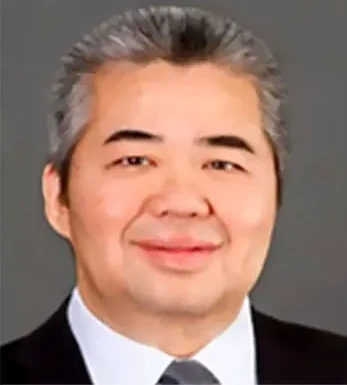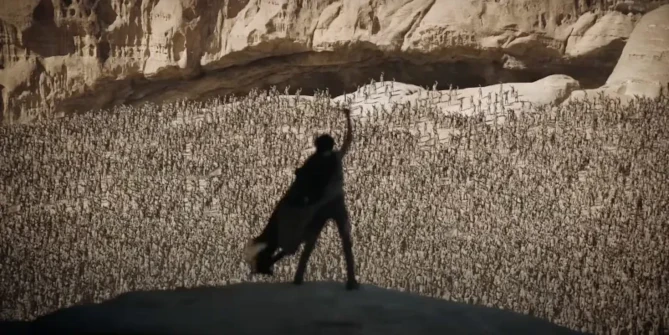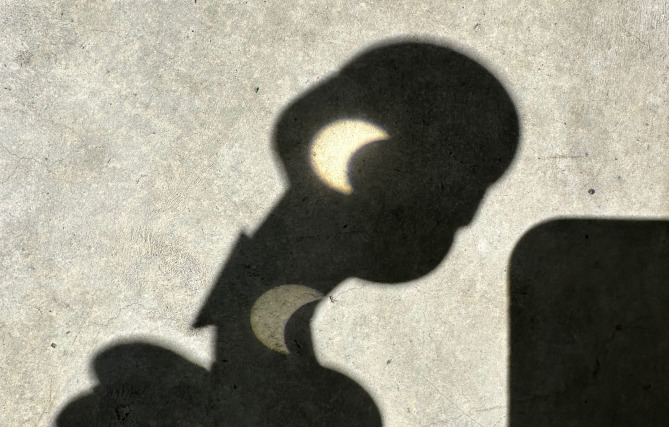
Eclipse in LA as projected through my binoculars.
I’ve always wanted to see a total solar eclipse and a few weeks ago contemplated a trip to San Antonio where we have some friends. But a few minutes looking at last minute flight options quashed our attempt to check this one off the bucket list. The weather didn’t cooperate in most of Texas anyways so we would likely have ended up drinking beer on our friend’s couch, not necessarily a bad outcome.
Instead of a trip to Texas I decided to stay put and participate in a physics experiment run by HamSCI out of the University of Scranton that is attempting to answer the question, “How do solar eclipses impact ionospheric structure and dynamics?”
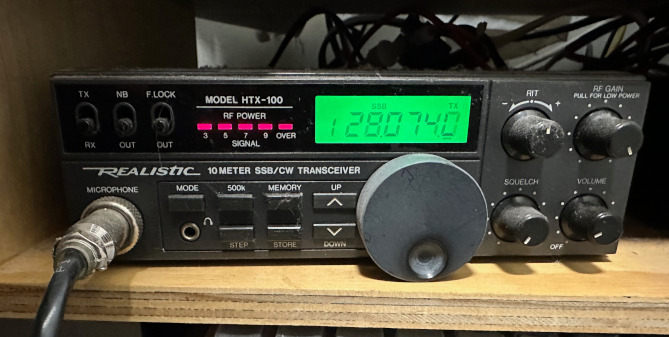
To answer this question HamSCI uses data collected though amateur radio transmission and reception reports. To participate in their eclipse experiment all I had to do was fire up my ancient and somewhat dusty $50 Radio Shack 10 meter radio and, using a digital transmission mode called FT8, send and receive as many messages as I could before, during and after the eclipse. My laptop generates the signals and, using a 3rd party interface box, connects and controls the radio. The folks at HamSCI will analyze the signal reports that are collected on the interwebs.

One of the remarkable features of this digital transmission mode is that you can send and receive messages with people all over the world with very little power and, in my case, a primitive, repurposed CB antenna. The signals bounce off the ionosphere, sometimes multiple times, to reach their destinations. The map above shows the other stations that received my signals during the day of the eclipse.
With the way the signal propagates I can easily reach the East Coast of the U.S., Central and South America and the South Pacific and Asia. I’ve never managed to reach the Midwest or anything north due to the path of the signal and, likely, some issues with my cheap antenna.

Once you get past the initial setup of the open source software used for these digital transmissions, communication is simple. You choose an open frequency with your mouse using the spectrum display at the top and the software handles the back and forth between you and whoever you are communicating with. The messages consist of an exchange of call signs, signal reports and a closing “73” which means something like “best regards”. The lack of a language barrier makes it easy to contact people all over the world.
While I’d love to have been in the path of the eclipse I did get to see at least a third or so of the moon cover the sun as well as some noticeable dimming of our always bright Los Angeles landscape. I spent the time near totality running between our porch and the closet that houses the old-man radio equipment.
How did your solar eclipse viewing go? Were you in the path of totality? What was the scene like? Leave a comment!
